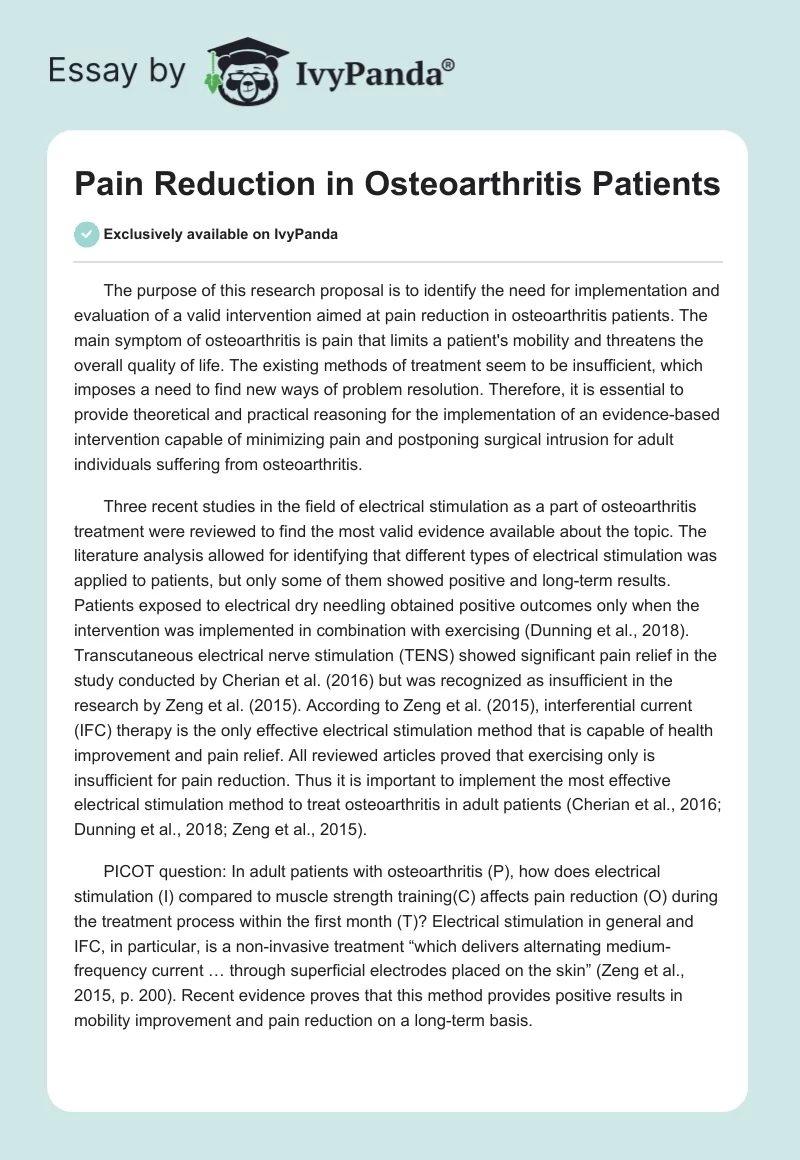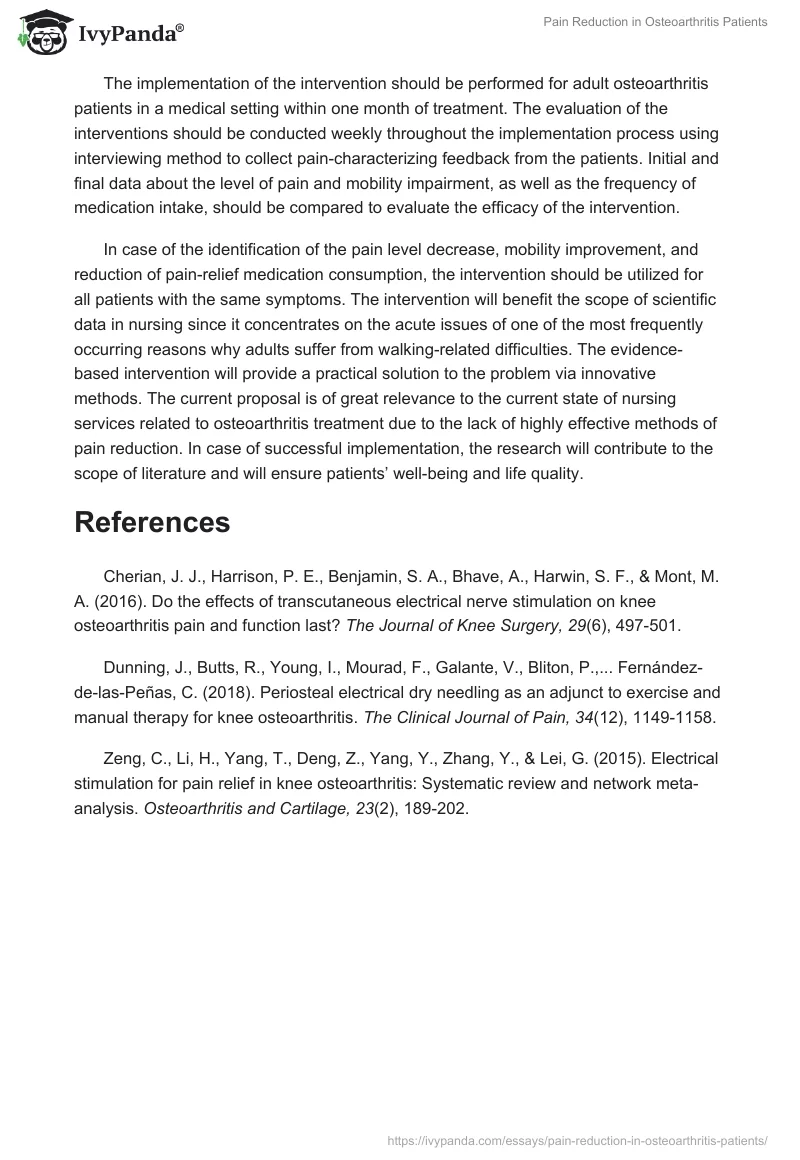The purpose of this research proposal is to identify the need for implementation and evaluation of a valid intervention aimed at pain reduction in osteoarthritis patients. The main symptom of osteoarthritis is pain that limits a patient’s mobility and threatens the overall quality of life. The existing methods of treatment seem to be insufficient, which imposes a need to find new ways of problem resolution. Therefore, it is essential to provide theoretical and practical reasoning for the implementation of an evidence-based intervention capable of minimizing pain and postponing surgical intrusion for adult individuals suffering from osteoarthritis.
Three recent studies in the field of electrical stimulation as a part of osteoarthritis treatment were reviewed to find the most valid evidence available about the topic. The literature analysis allowed for identifying that different types of electrical stimulation was applied to patients, but only some of them showed positive and long-term results. Patients exposed to electrical dry needling obtained positive outcomes only when the intervention was implemented in combination with exercising (Dunning et al., 2018). Transcutaneous electrical nerve stimulation (TENS) showed significant pain relief in the study conducted by Cherian et al. (2016) but was recognized as insufficient in the research by Zeng et al. (2015). According to Zeng et al. (2015), interferential current (IFC) therapy is the only effective electrical stimulation method that is capable of health improvement and pain relief. All reviewed articles proved that exercising only is insufficient for pain reduction. Thus it is important to implement the most effective electrical stimulation method to treat osteoarthritis in adult patients (Cherian et al., 2016; Dunning et al., 2018; Zeng et al., 2015).
PICOT question: In adult patients with osteoarthritis (P), how does electrical stimulation (I) compared to muscle strength training(C) affects pain reduction (O) during the treatment process within the first month (T)? Electrical stimulation in general and IFC, in particular, is a non-invasive treatment “which delivers alternating medium-frequency current … through superficial electrodes placed on the skin” (Zeng et al., 2015, p. 200). Recent evidence proves that this method provides positive results in mobility improvement and pain reduction on a long-term basis.
The implementation of the intervention should be performed for adult osteoarthritis patients in a medical setting within one month of treatment. The evaluation of the interventions should be conducted weekly throughout the implementation process using interviewing method to collect pain-characterizing feedback from the patients. Initial and final data about the level of pain and mobility impairment, as well as the frequency of medication intake, should be compared to evaluate the efficacy of the intervention.
In case of the identification of the pain level decrease, mobility improvement, and reduction of pain-relief medication consumption, the intervention should be utilized for all patients with the same symptoms. The intervention will benefit the scope of scientific data in nursing since it concentrates on the acute issues of one of the most frequently occurring reasons why adults suffer from walking-related difficulties. The evidence-based intervention will provide a practical solution to the problem via innovative methods. The current proposal is of great relevance to the current state of nursing services related to osteoarthritis treatment due to the lack of highly effective methods of pain reduction. In case of successful implementation, the research will contribute to the scope of literature and will ensure patients’ well-being and life quality.
References
Cherian, J. J., Harrison, P. E., Benjamin, S. A., Bhave, A., Harwin, S. F., & Mont, M. A. (2016). Do the effects of transcutaneous electrical nerve stimulation on knee osteoarthritis pain and function last? The Journal of Knee Surgery, 29(6), 497-501.
Dunning, J., Butts, R., Young, I., Mourad, F., Galante, V., Bliton, P.,… Fernández-de-las-Peñas, C. (2018). Periosteal electrical dry needling as an adjunct to exercise and manual therapy for knee osteoarthritis. The Clinical Journal of Pain, 34(12), 1149-1158.
Zeng, C., Li, H., Yang, T., Deng, Z., Yang, Y., Zhang, Y., & Lei, G. (2015). Electrical stimulation for pain relief in knee osteoarthritis: Systematic review and network meta-analysis. Osteoarthritis and Cartilage, 23(2), 189-202.


